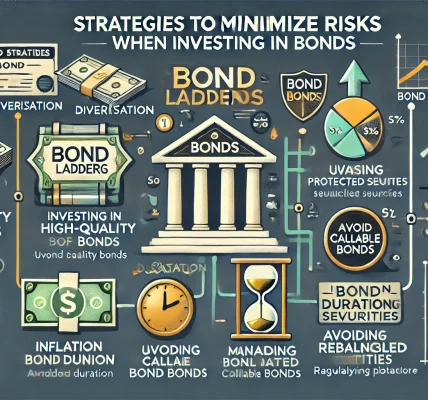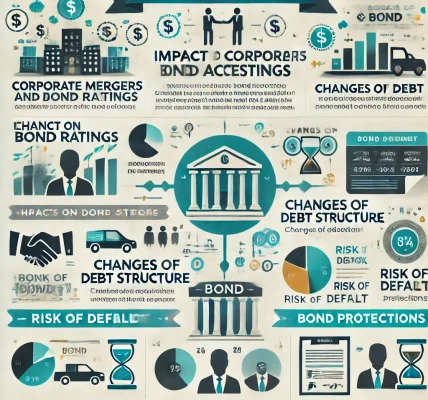Introduction
When it comes to managing a bond portfolio, most investors focus on duration as a key metric for assessing interest rate risk. However, bond convexity is an equally critical factor that often goes unnoticed. Understanding convexity helps investors accurately predict changes in bond prices due to fluctuations in interest rates and make more informed investment decisions.
In this blog, we’ll explore what bond convexity is, how it impacts bond prices, and why it plays a pivotal role in managing bond portfolios. We’ll also analyze the advantages and potential risks associated with convexity to help you optimize your bond strategy.
🎯 What Is Bond Convexity?
Bond convexity measures the rate of change in a bond’s duration as interest rates fluctuate. It provides a more precise estimate of the relationship between bond prices and interest rate changes than duration alone.
✅ Definition:
Convexity refers to the curvature in the relationship between a bond’s price and interest rates. It shows how the bond price reacts to large interest rate movements.
✅ Formula: Convexity=1P∑(Ct×t×(t+1)(1+y)t)\text{Convexity} = \frac{1}{P} \sum \left( \frac{C_t \times t \times (t + 1)}{(1 + y)^t} \right)Convexity=P1∑((1+y)tCt×t×(t+1))
Where:
- PPP = Bond price
- CtC_tCt = Cash flow at time ttt
- yyy = Yield to maturity (YTM)
✅ Key Concept:
- A positive convexity bond increases in price at a faster rate when interest rates fall compared to how quickly it declines when rates rise.
- A negative convexity bond behaves oppositely, with price increases slowing as rates drop.
📊 How Does Bond Convexity Work?
📈 1. Impact on Bond Prices
While duration measures the linear relationship between interest rates and bond prices, convexity captures the non-linear impact.
✅ When Interest Rates Drop:
- Bond prices rise, but the rate of increase is higher for bonds with positive convexity.
- Convexity cushions the downside risk by making the price less sensitive to falling rates.
✅ When Interest Rates Rise:
- Bond prices fall, but the rate of decline is slower for bonds with positive convexity.
- This reduces the impact of rising rates on the bond’s price.
🕒 2. Difference Between Duration and Convexity
✅ Duration: Measures the sensitivity of bond prices to small changes in interest rates.
✅ Convexity: Measures how much the duration of a bond changes as interest rates fluctuate.
👉 Example:
If interest rates drop by 1%, a bond with higher convexity will experience a larger price increase than a bond with lower convexity, even if both have the same duration.
📊 3. Understanding Positive and Negative Convexity
✅ Positive Convexity:
- Common in traditional bonds such as government and high-grade corporate bonds.
- Bond prices increase at a faster rate when yields decline.
✅ Negative Convexity:
- Found in callable bonds and mortgage-backed securities.
- When yields drop, these bonds increase in price at a slower rate due to prepayment risk.
📝 Why Bond Convexity Is Important for Portfolio Management
🎯 1. Mitigating Interest Rate Risk
✅ Convexity provides a buffer against extreme interest rate changes.
A portfolio with higher convexity is better equipped to handle sudden interest rate movements, offering protection to bondholders.
📈 2. Accurate Price Prediction
✅ Convexity refines price estimates beyond duration.
Investors using convexity models get a more realistic estimate of bond price changes, especially during volatile market conditions.
💼 3. Better Risk-Adjusted Returns
✅ Bonds with higher convexity generate higher returns for a given level of interest rate risk.
For long-term investors, adding convexity to the portfolio helps balance risk and return.
🔍 4. Managing Callable and Mortgage-Backed Securities
✅ Negative convexity requires active management.
Callable bonds and mortgage-backed securities need extra monitoring since their prices react differently to interest rate movements.
📚 Types of Bonds and Their Convexity Profiles
🏦 1. Government Bonds
✅ Convexity Profile:
- Generally positive convexity.
- Low risk and predictable price behavior.
🏢 2. Corporate Bonds
✅ Convexity Profile:
- Moderate convexity.
- Subject to changes in credit risk and market liquidity.
🏡 3. Mortgage-Backed Securities (MBS)
✅ Convexity Profile:
- Often exhibit negative convexity due to prepayment risks.
- Require careful monitoring in falling interest rate environments.
🕒 4. Callable Bonds
✅ Convexity Profile:
- Negative convexity due to the possibility of early redemption.
- Investors face reinvestment risk if the bond is called when rates fall.
📊 Comparing Bonds with Different Convexity Levels
| Bond Type | Convexity Type | Risk Level | Price Sensitivity |
|---|---|---|---|
| Government Bonds | Positive Convexity | Low | Low Sensitivity |
| Corporate Bonds | Positive Convexity | Moderate | Moderate Sensitivity |
| Mortgage-Backed Securities | Negative Convexity | High | High Sensitivity |
| Callable Bonds | Negative Convexity | High | High Sensitivity |
⚡ Pros and Cons of Convexity in Bond Portfolios
✅ Advantages of High Convexity
✅ 1. Greater Price Appreciation:
Bonds with positive convexity experience larger price gains when interest rates drop.
✅ 2. Lower Risk in Rising Rate Environments:
High convexity protects the portfolio from sharp price declines when rates increase.
✅ 3. More Accurate Risk Assessment:
Including convexity provides a realistic estimate of price sensitivity, reducing portfolio surprises.
🚫 Disadvantages of High Convexity
🚫 1. Lower Yield Potential:
Bonds with high convexity often have lower yields compared to bonds with less convexity.
🚫 2. Limited Impact in Flat Yield Curves:
In a stable rate environment, convexity has little impact on price behavior.
🚫 3. Complex Calculations:
Managing convexity requires advanced modeling and constant monitoring.
📈 Strategies to Use Bond Convexity Effectively
🎯 1. Diversify Across Convexity Profiles
✅ Mix Positive and Negative Convexity Bonds:
Combine government bonds with corporate and callable bonds to balance convexity exposure.
📊 2. Use Convexity to Hedge Interest Rate Risk
✅ Higher Convexity in Volatile Markets:
When volatility is high, increasing convexity reduces exposure to interest rate changes.
🕒 3. Monitor Callable Bonds and MBS
✅ Track Prepayment Risk:
Actively manage callable and mortgage-backed securities to mitigate the impact of negative convexity.
🎉 Conclusion: Mastering Bond Convexity for Smarter Portfolio Management
Bond convexity plays a critical role in determining how bond prices react to interest rate changes, making it a vital factor in managing a successful bond portfolio. By incorporating convexity into your strategy, you can better predict price movements, mitigate risks, and optimize returns.
✅ Key Takeaways:
- Convexity provides a more accurate estimate of bond price changes compared to duration.
- Positive convexity offers better price appreciation when interest rates fall.
- Negative convexity requires careful management to avoid unexpected price declines.
For long-term bond investors, understanding and leveraging bond convexity ensures a balanced and resilient portfolio capable of withstanding market fluctuations.




